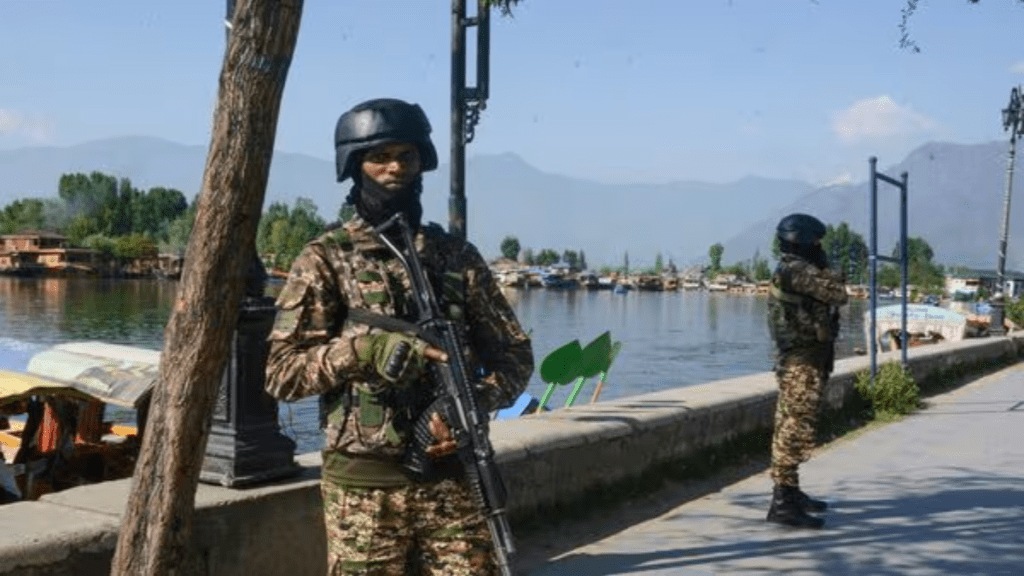By N Chandra Mohan, The writer is an economics and business commentator based in New Delhi
There is a feeling of déjà vu around the steady drumbeat for retribution following the dastardly cross-border terrorist attack near Pahalgam in Kashmir on April 22. In 2016 and 2019, too, there was a similar clamour after the Uri attacks and suicide bombing of 40 Indian paramilitary soldiers in Pulwama. What followed was a surgical strike by the Indian army’s commandos on terrorist launch pads in Pakistan Occupied Kashmir and air strikes in Balakot in Pakistan. This time, however, is different as dark clouds are gathering with the armies of both nations on high alert. The dangerous stand-off between two nuclear-armed countries has set off alarms internationally with calls for restraint as any miscalculation could lead to a war.
There is no doubt that India will retaliate at a time of its choosing with Prime Minister Narendra Modi giving full operational freedom to the armed forces in this regard. The surprise element for cross-border surgical strikes, however, may have passed as Pakistan is fully prepared. A calibrated response is inevitable as there are kinetic options below the threshold of an all-out conflict. Despite “unprovoked violations” of the ceasefire agreement along the line of control, the Indian army has shown restraint so far and has even warned Pakistan’s army. Covert retaliation appears to be the most efficacious option as “war is not an option… it is not just the last option but the last bad option” as rightly argued by the former chief of Research and Analysis Wing, AS Dulat.
What is different this time is also the range of non-military measures taken by India to impose severe costs on Pakistan for its cross-border transgressions. To be sure, the current ban on direct and indirect imports from Pakistan is relatively less impactful as bilateral trade has been in a deep freeze since the Pulwama attack. Our dependence on trading with Pakistan is limited. Far more consequential is India’s unilateral suspension of the 65-year-old Indus Waters Treaty that awarded the use of three western rivers — the Indus, Chenab, and Jhelum — to Pakistan while three eastern rivers — the Ravi, Sutlej, and Beas — were given to India. This treaty has so far miraculously survived through three wars and perennial political tensions between the two neighbours.
The treaty’s suspension can potentially bring Pakistan’s economy to its knees as it depends on these western rivers for 80% of its agricultural output and a third of its electricity generation. India is not obliged now to share data that is vital for flood, irrigation, and hydropower planning. Any sudden release of temporarily withheld water from dams can lead to floods downstream in Pakistan. India has curtailed the flow of water through the Baglihar Dam on the Chenab and is planning similar measures on the Kishanganga Dam along the Jhelum. Islamabad has warned New Delhi that any moves to restrict its waters governed by the treaty would be “an act of war”.
India, in fact, considered terminating the treaty in 2016 as also in 2019 but did not follow through as it has done now. After the Uri attacks, PM Modi had warned that “blood and water cannot flow together”. However, while unilaterally suspending the treaty is the easy part, there are questions on whether India currently has the storage capacity to divert a substantial amount of the waters that flow into Pakistan. Upper riparian nations have responsibilities to share waters with those who are downstream. How will India react if Pakistan’s ally, China, similarly chooses to weaponise water supplies by restricting the flow of Tibet’s longest river Yarlung Tsangpo, also known as the Brahmaputra, which can impact its citizens in the northeastern region?
Another non-military measure is to raise concerns regarding a fresh loan tranche of $1.3 billion for Pakistan when the International Monetary Fund’s executive board meets on May 9. Due to a stressed balance-of-payments situation, Pakistan secured a $7-billion bailout programme from the Fund last year and was granted a $1.3-billion climate resilience loan in March. Its economy stabilised and the bailout helped to stave off a default threat. Growth of 2.7% is likely in 2024-25 (July to June). Inflation has dropped. Debt is stabilising. India has usually abstained from voting on loans to Pakistan but last year it asked the Fund to place caveats that such loans are not used for arms purchases. India now seeks a review highlighting Pakistan’s role as a sponsor of terror.
Given the rising tensions, there is a need for diplomacy and dialogue to enable both India and Pakistan to pull back from the brink of an all-out conflict. The absence of any backchannels or off-ramps to tamp down temperatures is deeply troubling in this context. Although the US played a role to ensure that the tit-for-tat reprisals post-2019 did not get out of control, this time there is only concern about a regional conflict in the making and that Pakistan should cooperate with India in investigating who was responsible for the terrorist attack on April 22. India, for its part, has no doubts as to who was responsible as it gears up to avenge what happened that day.

